One of the dozens of benefits of Carla Jean joining us on our project (aside from her fabulous research, entertainment of and by my children, having another adult along for long car trips, and her spectacular articulation of our journeys) is that people have read her articles and emailed her, inviting us to places we didn’t even know existed.
In that manner, we found this unbelievable jewel in our state.
This, y’all, is THE ultimate museum of Alabama History that we didn’t even know existed – and it’s free. The Department of Archives and History in Montgomery is an amazing asset of our state, for both children and adults. They have a research room where you can study family genealogy (including “runners” who will go to the basement and pull ancient archival information for you),
underground archives with fascinating ancient record books,
and a gorgeous chronological museum of Alabama History.
My friend Christen and her two oldest kids, Luke and Aubrey joined us for our journey.
It took the kids five seconds to see the activity sheet in the lobby, and set to work.
Ali brought her camera along, and was fascinated by the ornate ceilings. The fanciness of the surroundings certainly made them feel special – and quite proper.
We visited to the museum first. We were at the point of studying Statehood, and museum guide Wesley Garmon gave us an excellent tour of that specific area. Carla Jean did an excellent job of recording what we learned – click here for her article.
We also saw the only medallions known to still be in existence that signified the Treaty of 1790 between George Washington and the Creek Indians:
As mentioned in a previous Alabama History post, this treaty promised the Creek Indians not to take any more of their land. The very next exhibit showed a map and timeline of the Indian Removal that occurred just a few decades later.
The kids learned about the chief early industry of Alabama, cotton,
As well as seeing artifacts illustrating what their life might have looked like if they were a child in the 1800s.
(Ali made me crop the Smallpox arm out of this picture in her report – she was not a fan. I mean seriously. As if cross-stitching for fun wasn’t bad enough…how about cross-stitching with an arm eaten away with smallpox. Be grateful for your iPads and vaccinations, kiddos.)
The museum was vast, but we only covered the early history of Alabama on our first visit.
On our way out of the museum, the kids got to see the state bible – the bible that every governor of Alabama has been sworn in with.
We then went to the interactive room – they have themed Discovery Buckets with hands-on items and activities to teach about Alabama History (similar learning backpacks are also available for loan through the mail for only $10), as well as many activity sheets, genealogical booklets to make, and many more exciting finds.
The girl’s favorite area was Grandma’s Attic, which was a hands-on area with a closet of old clothes, old toys, and a typewriter – all to play with.
Our guided tour moved to the basement where the archives are kept. The kids were in awe of the rows of history.
Keri, an archival specialist, took over our tour. She had already laid out for us the first map of Alabama AND the first constitution of the state.
Written in 1819, the scroll is held together by wax seals and silk ribbons, and hand-written at a level of neatness that I will aspire to for the rest of my life.
This was the moment I was glad I’d left Noah with my mom that day. Just the thought of him sneezing or tripping or grabbing the constitution made my heart skip a beat.
We spent way too long (and too much) in the gift shop, then headed outside to find our favorite Alabama items on the map in front of the building.
The day was a perfect way to introduce the kids to Alabama voices that shaped the state, as well as let them realize that they, too, are important Alabama Voices.
There was so much to see at this brilliant new discovery that, when we arrived at the Civil War section of our studies, we returned for another visit.
This time, a textile specialist, Ryan, took us to the Textiles storage to show us their collection of Confederate Flags, the third largest in the nation (or the world, if you want to get technical – as far as we know, no one in Switzerland is collecting flags from the Confederate States of America.)
This is where we learned that the Confederate Flags were far from uniform.
For instance, this was the first Confederate Flag, but they decided that it looked too similar to their enemy’s flag.
And this was an example of the very intricate Confederate Flags that the women would make for soldiers to carry – there was a bit of womanly competition over who could make the best.
(That’s a cotton plant, and the Latin, loosely translated, says “get your grubby hands off our cotton.”)
Later, Wesley took us back to the museum to the Civil War section, and explained how soldiers lived, ate, and documented their existence.
Their meals would often consist of Hardtack, which looked like a fillingless Pop Tart made out of petrified cork board and often had meal worms in it. But since there weren’t any better options, nor did the corner gas station sell overpriced legitimate Pop Tarts, they ate it anyway.
We were again amazed at the beauty and thoroughness of the museum, and enjoyed walking chronologically through the history of the state.
Since there weren’t going to be any 200 year old constitutions brought out this time around, I did bring Noah, who was very excited to see Grandma’s Attic for himself. The kid is a bit of a fashionista, so he immediately found himself a uniform, and wore it quite well, if I may say so.
(Carla Jean didn’t mind our revisiting Grandma’s Attic, either.)
Noah was also very excited about the gift shop, and he and his friend Levi chose Confederate hats, while Luke decided to go Union. There was quite the animosity between our soldiers from then on out.
A blog reader, Ashley, had offered to take us through the “Secret Tunnel” that connects the Capitol and State House, and also contains statues of famous Alabama soldiers.
The kids were impressed, and despite the size of our group and preponderance of male children (yes I’m sexist), no statues were harmed in our visit. (You’re welcome, Ashley.)
On the way home from Montgomery, we stopped off in Marbury, Alabama to visit the Confederate Memorial Park and Grounds. Situated on the grounds of the only Confederate Soldier’s Home, it told the fascinating story of the veterans of the Civil War from the losing side. Only Union Soldiers received a pension from the government, and so there was very little to help those many southern soldiers that were permanently scarred from the war. The museum told touching stories such as of three soldiers, all missing their left legs, who would hobble arm in arm through the compound with giant smiles on their faces.
The museum didn’t allow photos, but I did manage to snag this very early version of an Essential Oil.
I mean, I might even buy Mystic Oil of Joy if it were available now.
After the last soldier died, the compound became a place to care for Civil War widows. After the last widow died in the 1930s, they tore down most of the structures and used the supplies to build schools. There were a few structures left and a lot of foundations with informational signs, so we explored and learned.
Noah found this to be the perfect place to put his new Confederate hat to good use.
There were several trails on the property that led to fascinating finds, like the Spring House and the still-functioning water reservoir house.
After Noah managed to literally get stuck on a sign (and I took a few minutes to laugh at him and take photographs),
We ended our long day’s journey and headed home, with a much great understanding of the devastating impact of the Civil War, but also of the love and care that was given in this tiny, unknown Alabama town.
Here are Ali’s reports:
First Visit:
alabama-archives-smallerSecond Visit and Confederate Memorial:
archives-civil-war-visit-small
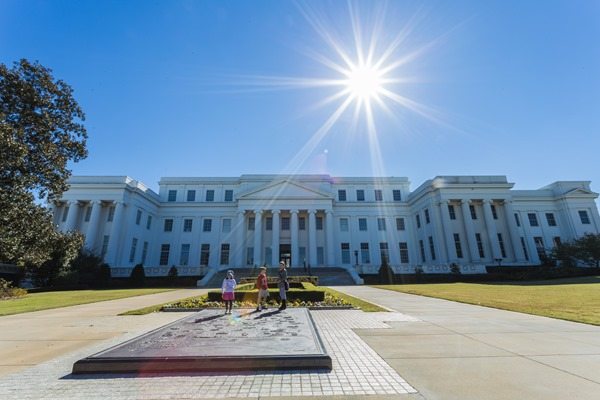
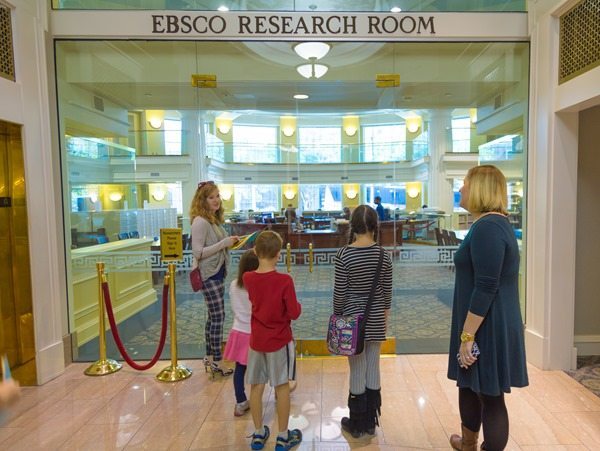

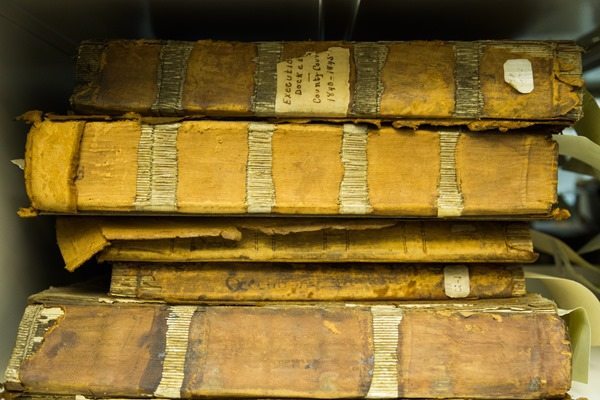
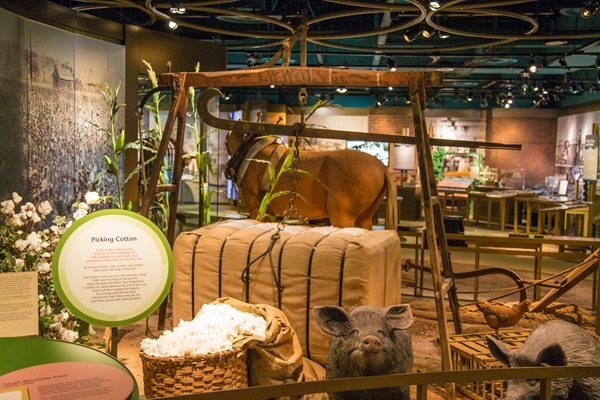
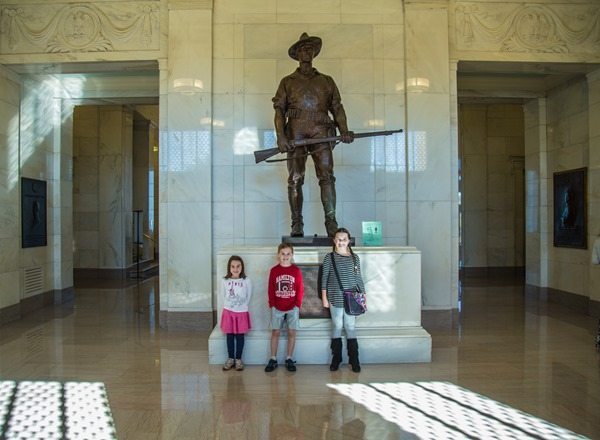
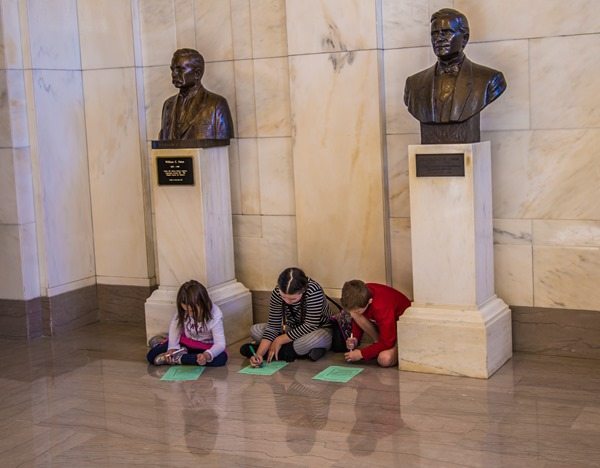
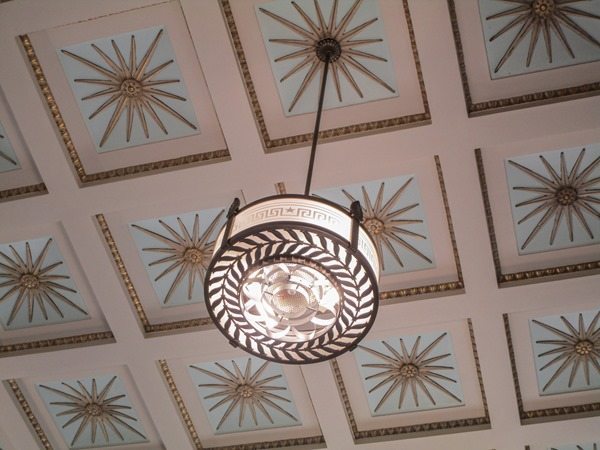
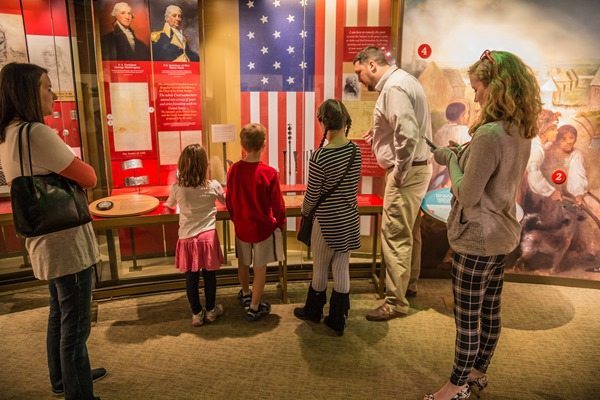
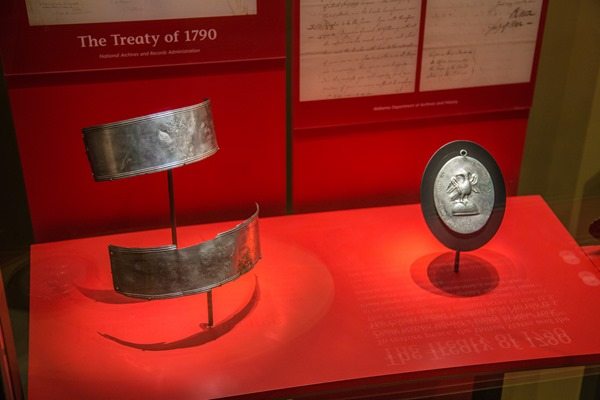
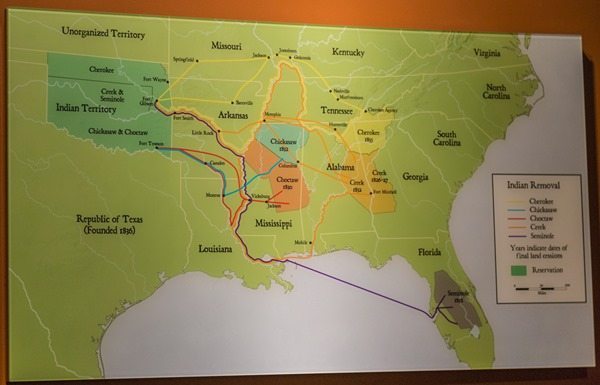
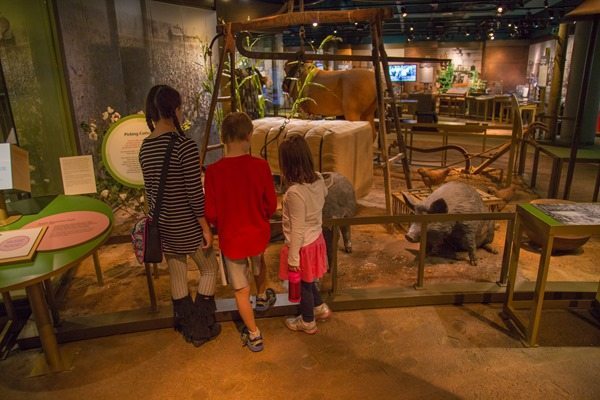
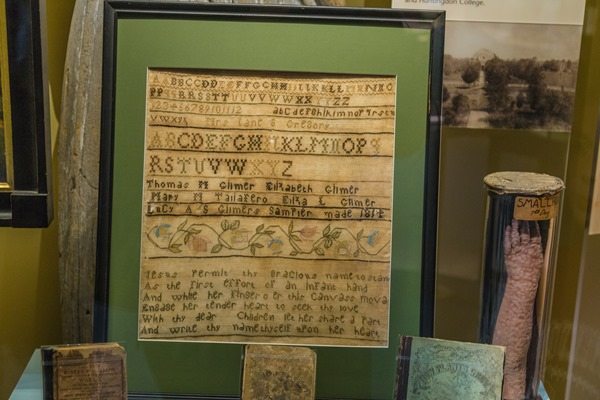
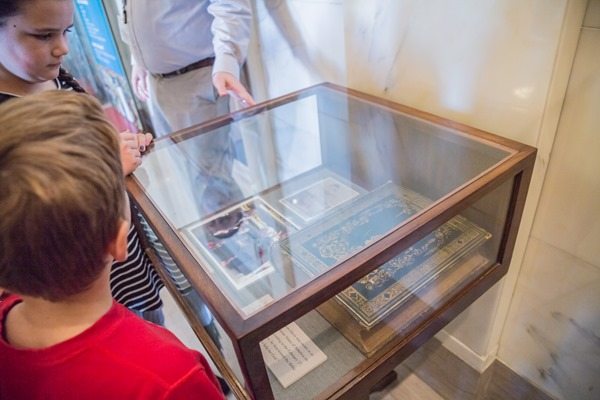
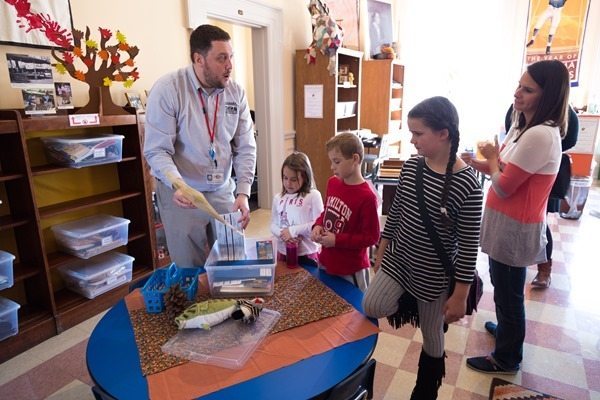
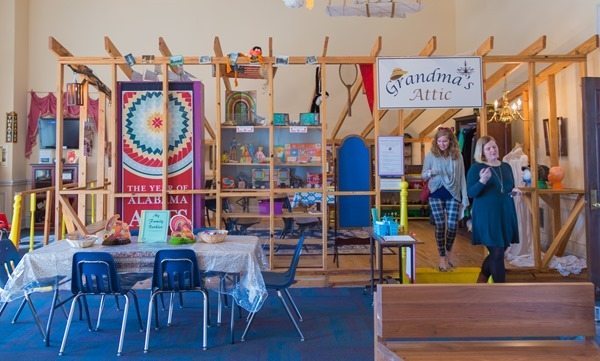
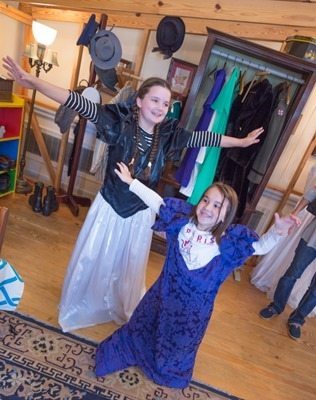
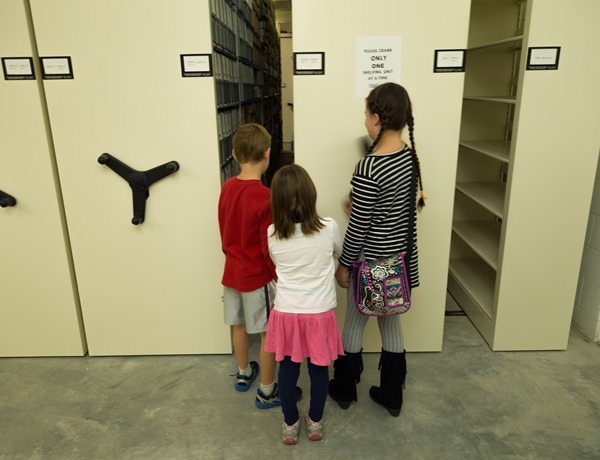
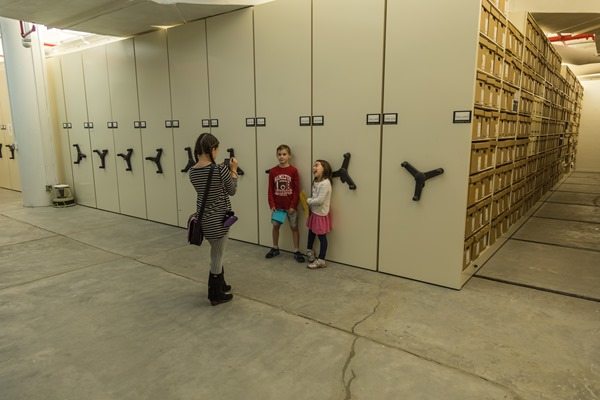
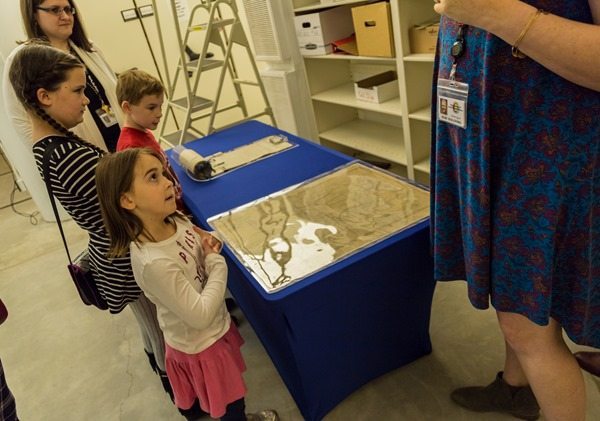
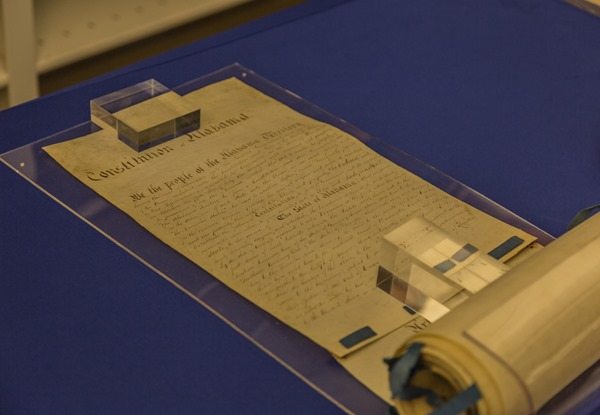
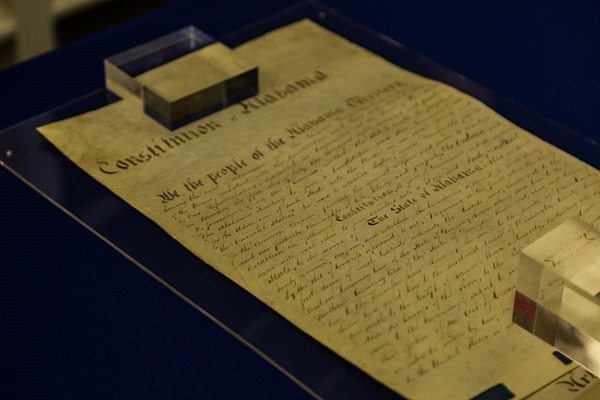
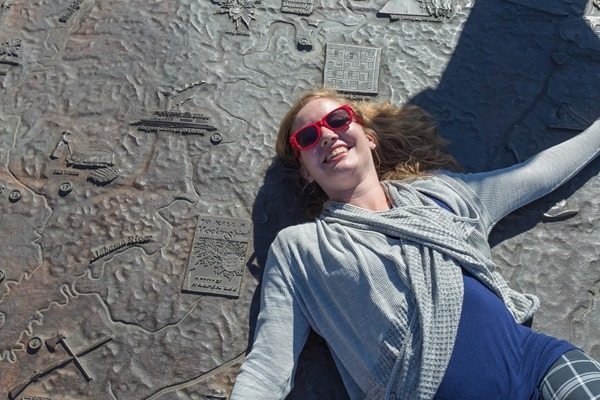
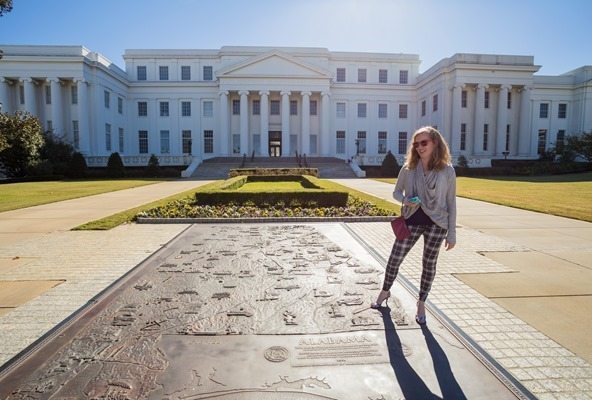
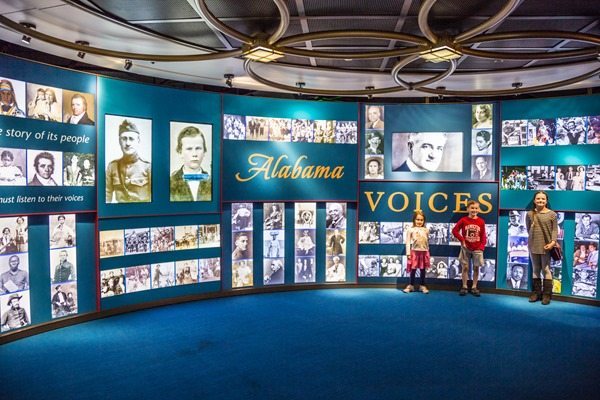
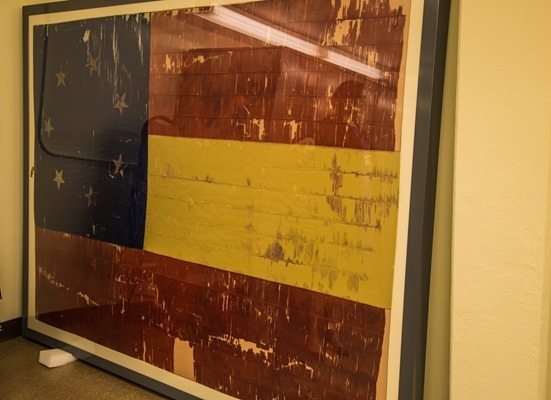
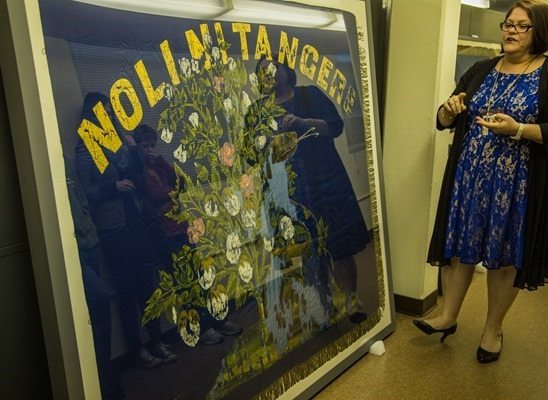
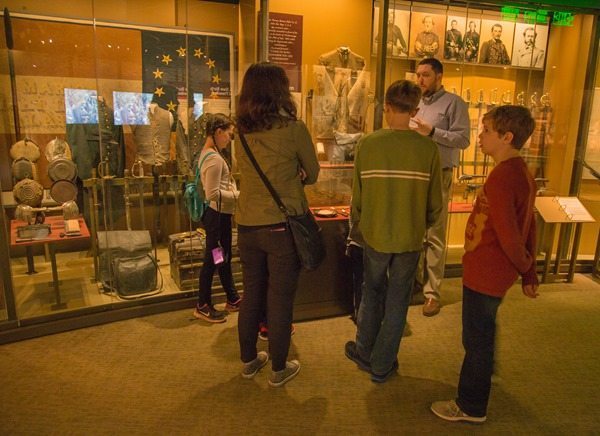
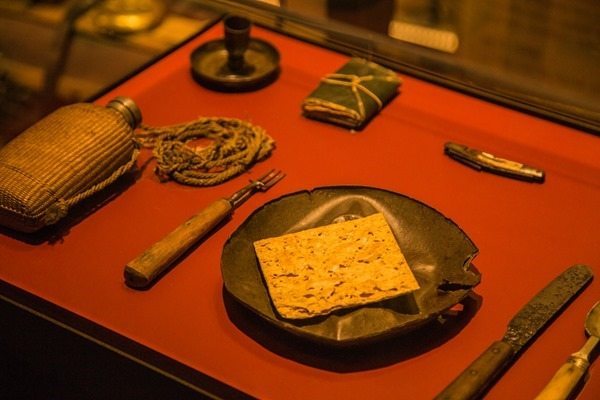
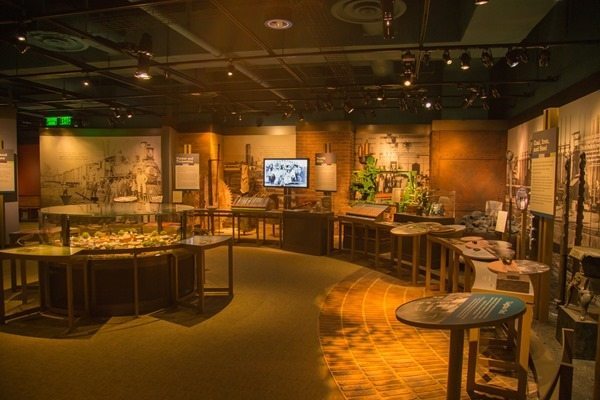
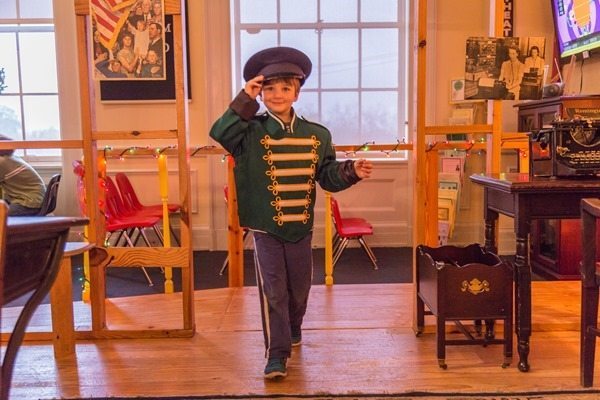
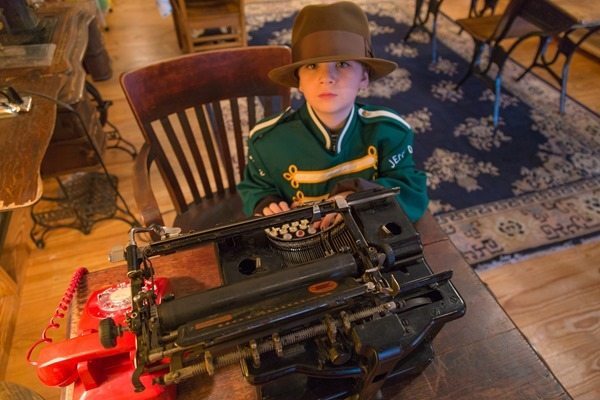
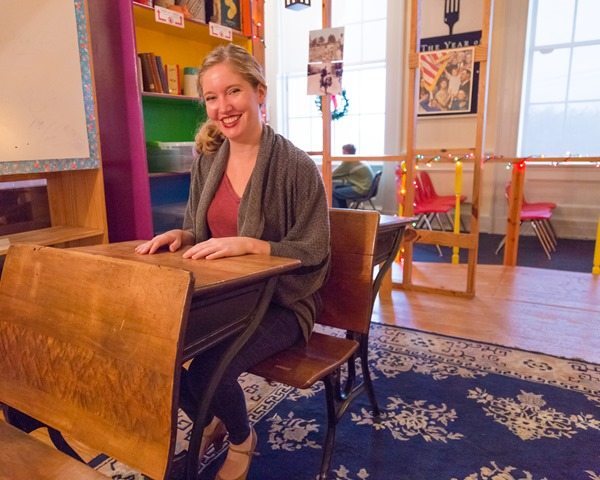
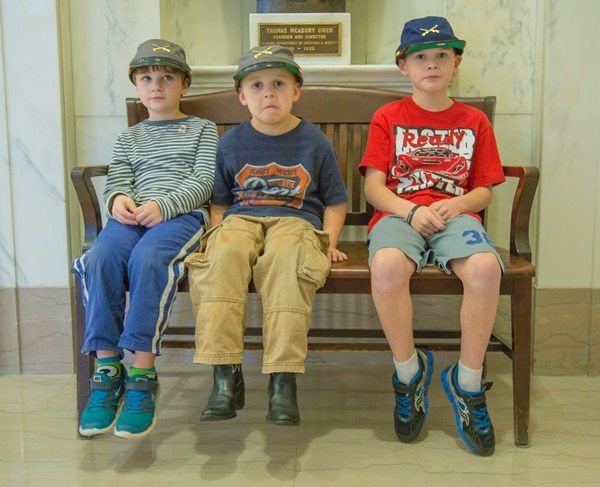
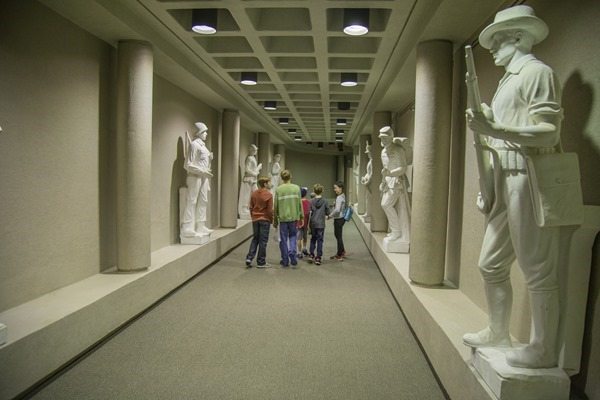
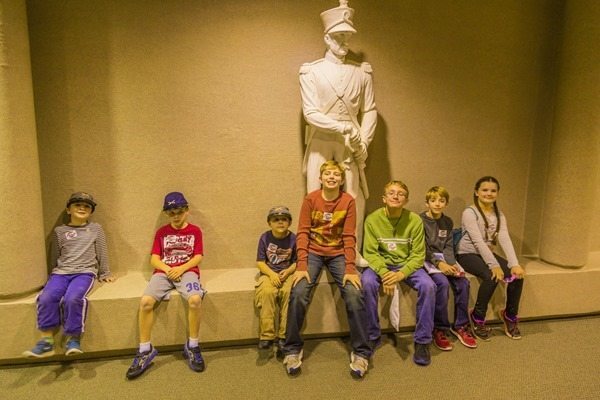
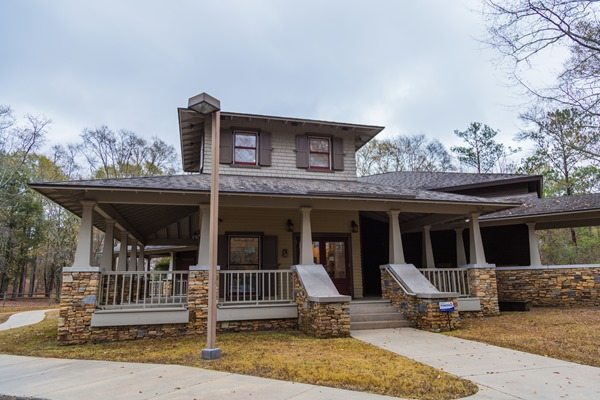
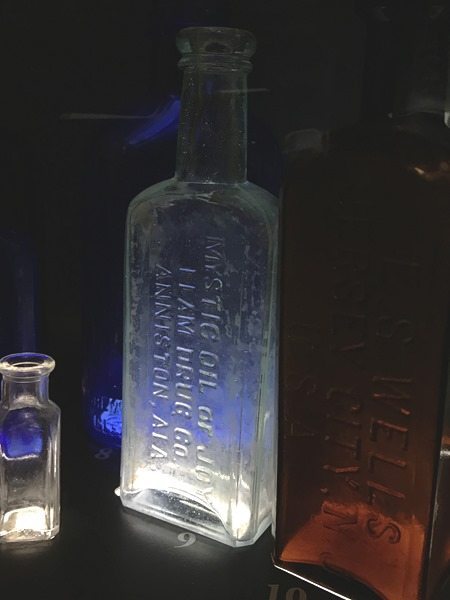
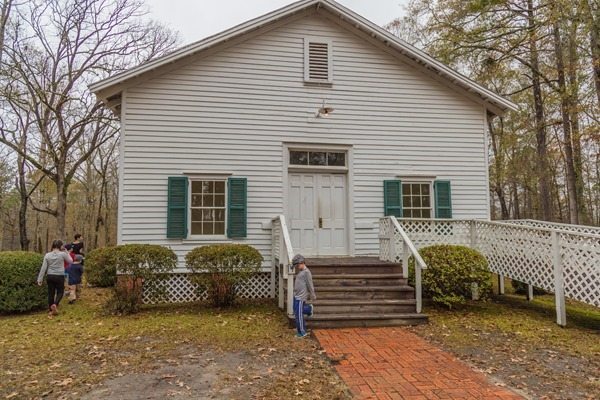
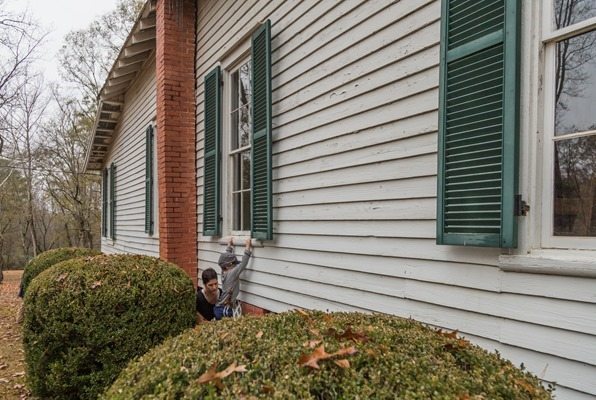
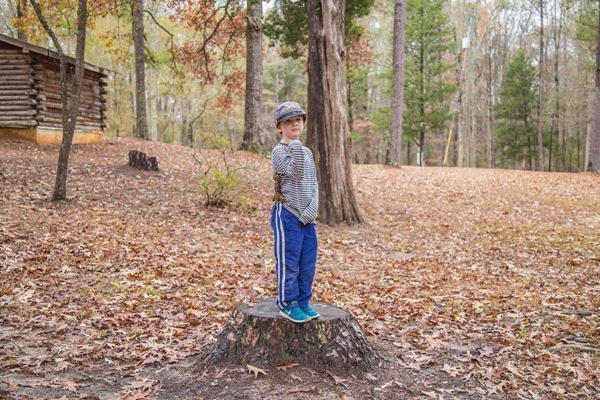
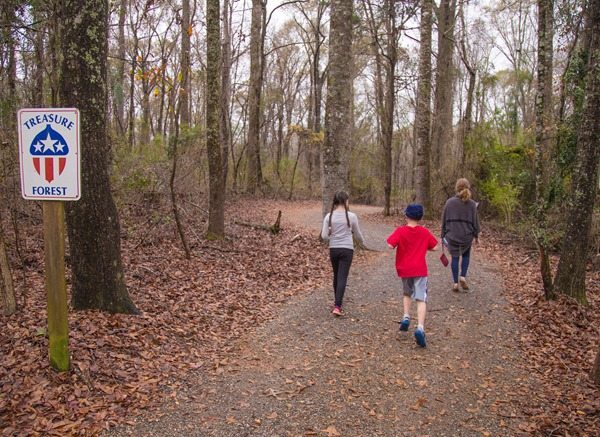
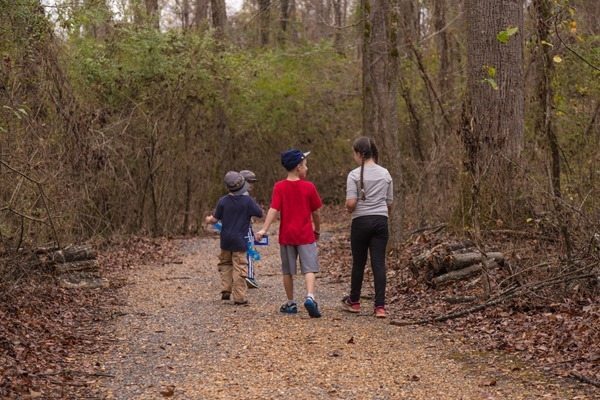
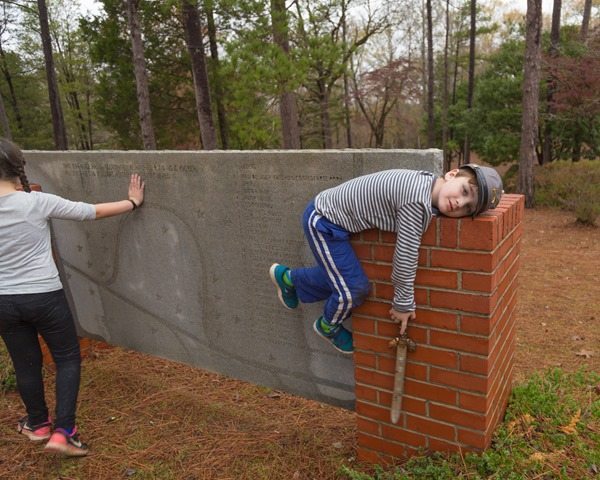
This field trip looks amazing! Have you read Team of Rivals? It’s sitting on my kindle but the almost 1,000 page count is intimidating me. I need a better understanding of the South’s perspective on the Civil War. Since I grew up and still live in the North, we always equate the Civil War with a war over slavery, and the Union soldiers are the “good guys” and Confederate soldiers are the “bad guys.” Our history books tend to gloss over the lasting impact of the war on the South.
Technically, I think you live in the wild wild west….I mean, Wisconsin wasn’t exactly a Civil War battleground, right? :-)
I haven’t read that, and I don’t claim to understand all the ins and outs either. I think primarily, it was indeed about slavery. But that doesn’t mean that the people in the south were “bad” or that the soldiers had bad motives. It was more like they felt like the industrialized North was trying to squash their way of life and they were fighting for freedom, for not becoming destitute, etc…..from what I understand. There were many, many nuances that I haven’t gotten into the nitty gritty of. I’ll let you know if I ever figure it all out. :-)
I’m enjoying your history trips so much – fascinating stuff out there if you know where to look. Ali does an amazing job recording things – can you imagine her children some day getting to see her books. You should put Ali’s work into a children’s book — another Laura Ingalls in the making.